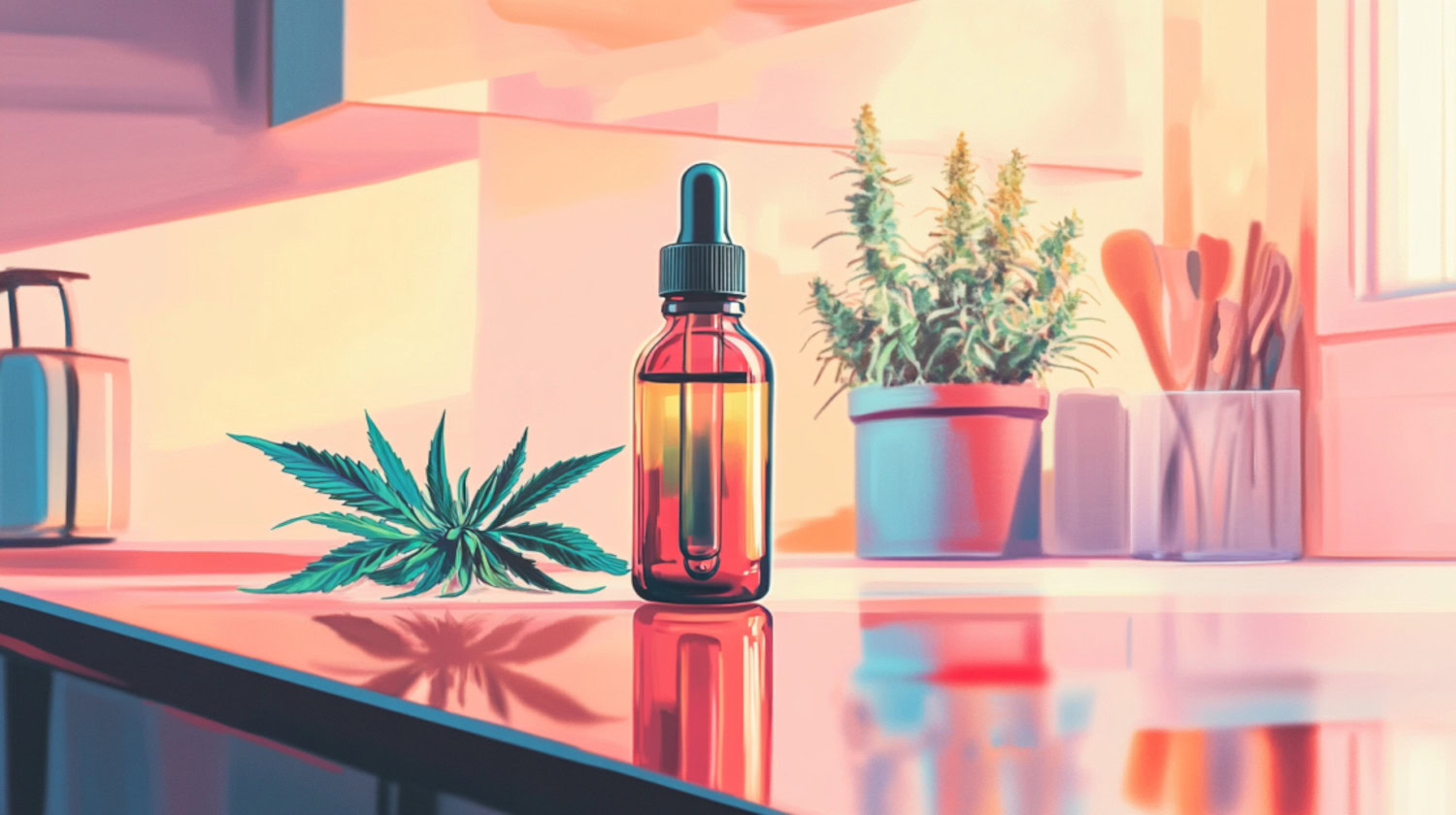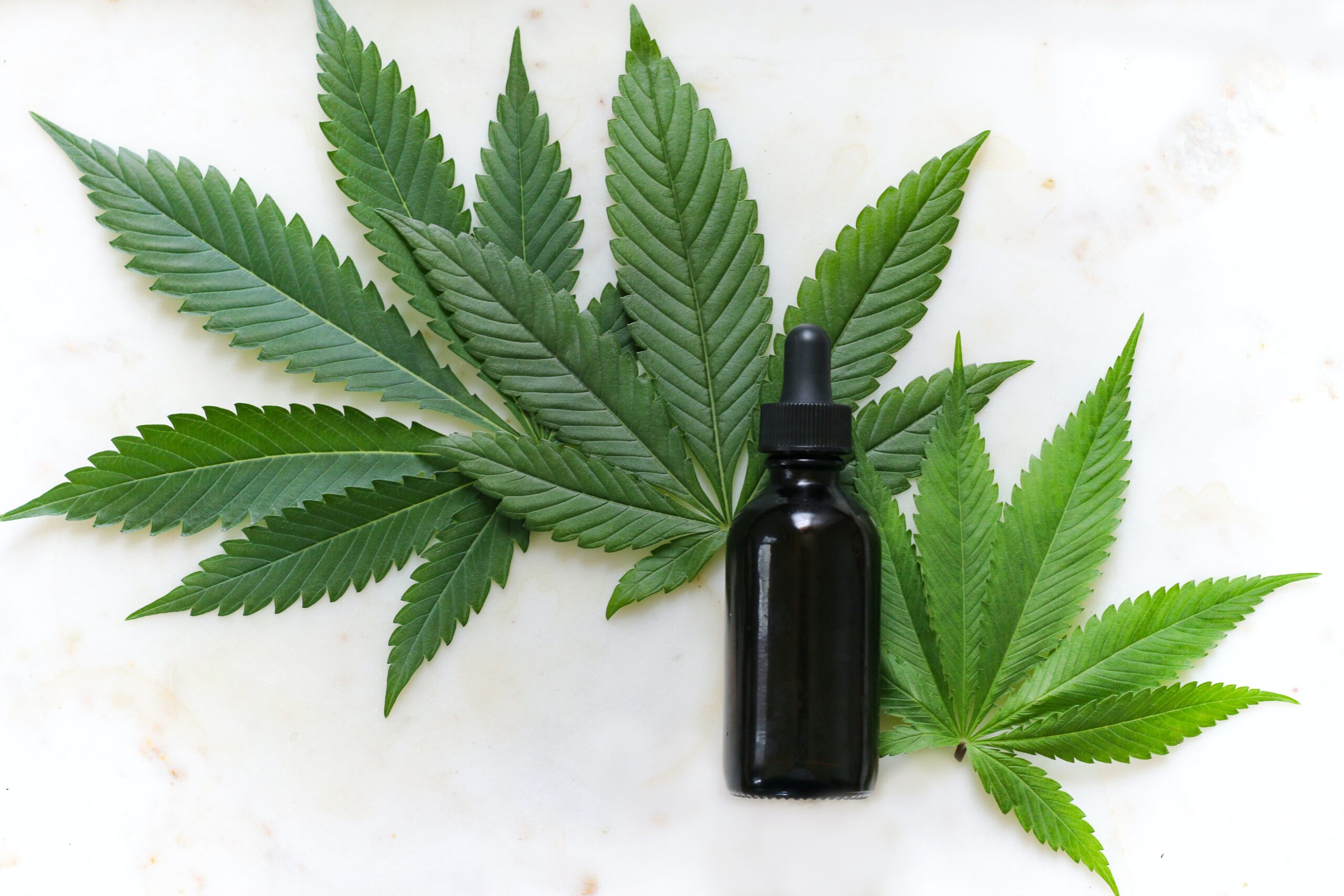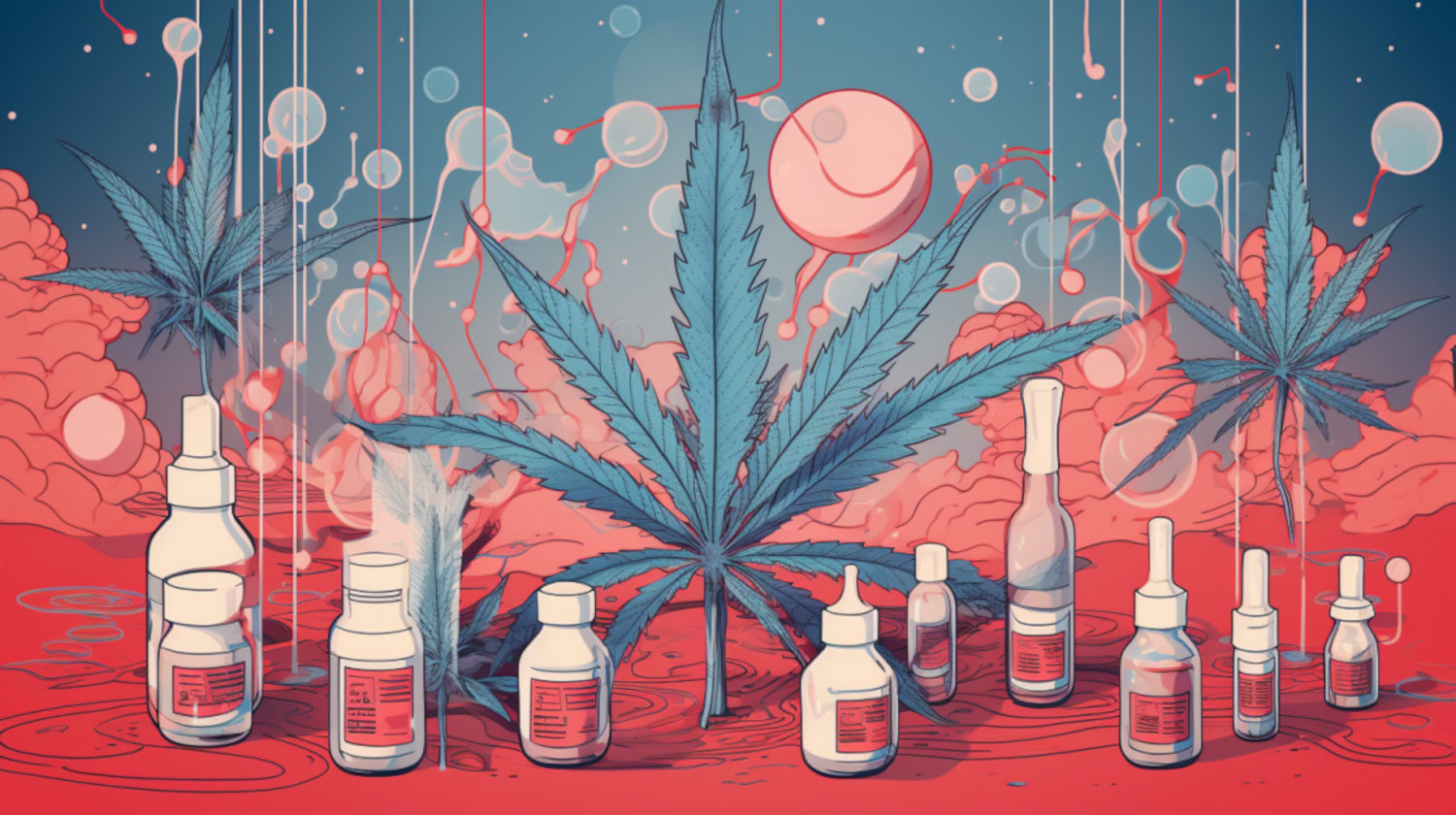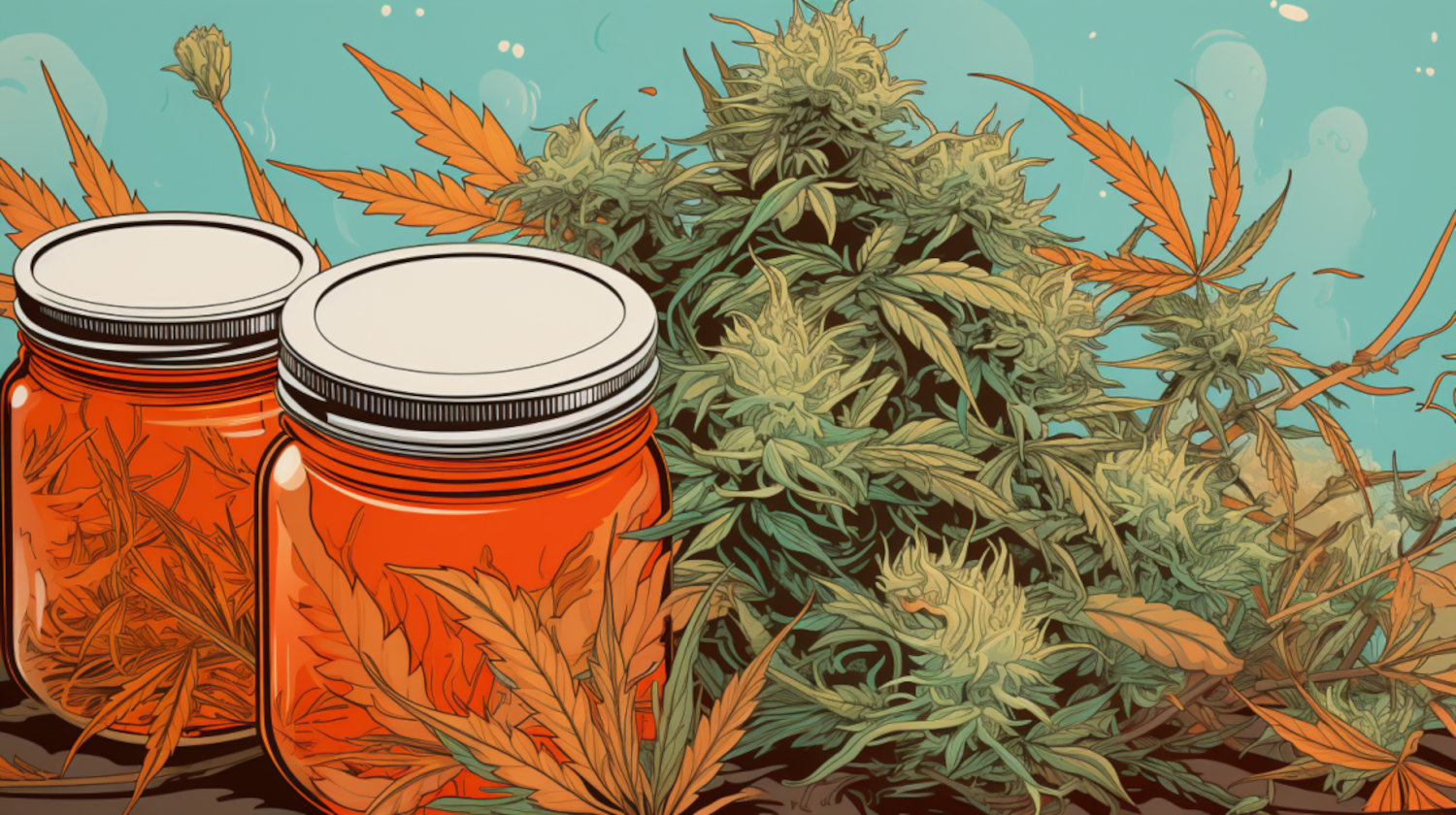In This Article
- What Is a THC Tincture?
- Alcohol vs. Oil-Based Tinctures: What’s the Difference?
- Alcohol-Based Tinctures
- Oil-Based Tinctures
- Ingredients and Tools to Make DIY Tincture
- Don’t Forget to Decarb
- How to Make a THC Tincture
- Alcohol-Based Tincture (Green Dragon Method)
- Quick Tincture Recipe: The Freezer Method
- Storage and Shelf Life
- Frequently Asked Questions (FAQ)
- How can I make a quick THC tincture?
- What’s the best oil for making THC tinctures?
- What’s the ideal THC-to-tincture ratio?
- What are the primary ingredients in THC tincture?
Key Takeaways
- THC tinctures provide a potent, smokeless way to consume cannabis.
- Alcohol-based tinctures act quickly; oil-based are gentler in taste.
- Decarb the flower > Add flower to alcohol or oil > Let sit in a cool dark place 2-4 weeks > Strain and bottle.
THC-based tinctures have been made for centuries. They are one of the simplest, most effective ways to enjoy cannabis. Created by soaking cannabis in alcohol, oil, or glycerin, this concentrated liquid extract is easy to dose, smoke- and vapor-free. It’s also extremely versatile, making it a product countless consumers enjoy.
While tinctures are made using a relatively straightforward process, there’s much to consider when selecting the perfect one, which is why plenty of people are left wondering how to make a THC tincture. From choosing between alcohol- and oil-based versions to learning step-by-step methods, dosing tips, and how to use THC tinctures safely and effectively, understanding the basics about THC tinctures will help you make the best selection.
What Is a THC Tincture?
Tinctures are a cannabis extract made by soaking cannabis flower in a liquid for a prolonged period, typically using high-proof alcohol, MCT oil, or glycerin. If we’re getting technical, “tincture” usually refers to an alcohol-based extract, while oil or glycerin-based versions are often called infusions. But in the cannabis world, tincture has become the catch-all term, no matter the base.
No matter the liquid used, the soaking draws out the plant’s desired compounds and cannabinoids, including THC and CBD. When produced correctly, the final product is a potent liquid. It’s traditionally consumed sublingually, under the tongue, for a quick effect, which can be felt in approximately 15 minutes. Depending on the formulation, tinctures can also be mixed into food or used as a topical.
Alcohol vs. Oil-Based Tinctures: What’s the Difference?
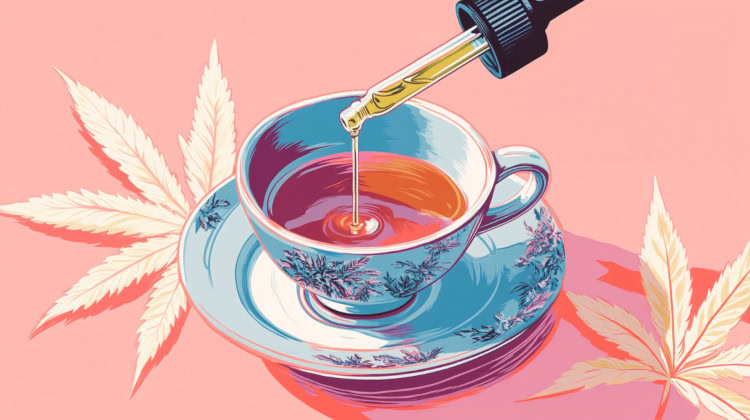
The base liquid chosen to make a tincture significantly impacts the final product’s flavor and efficacy, among other factors. Consider some of the benefits and possible drawbacks of using alcohol or oil.
Alcohol-Based Tinctures
Alcohol tinctures have the longest history, being a popular remedy in the 19th century and even seeing use during the American Civil War. Unfortunately, with prohibition, they fell out of fashion and are only now seeing a resurgence.
Often known as “Green Dragon,” these types of tinctures use food-grade, high-proof alcohol (e.g., Everclear) to extract cannabinoids from the cannabis plant. Alcohol absorbs quickly under the tongue, allowing consumers to feel the effects sooner, usually within 15-30 minutes.
While quick and potent, Green Dragon can be unpleasant to some. Alcohol-based tinctures can taste harsh, especially when using especially high-proof alcohol. Some people might find the tincture’s taste unappealing if the proof is too high.
Oil-Based Tinctures
Often made from MCT, coconut, or similar carrier oils, these tinctures offer consumers a milder taste than alcohol-based options. Oil tinctures are great for mixing into food or beverages, as their taste is less likely to alter the final flavor profile. While better tasting to most, oil-based tinctures have a slower onset of effects, with some taking 30-120 minutes when consumed like an edible.
Ingredients and Tools to Make DIY Tincture
Before making tincture at home, have the following ingredients on hand.
- Cannabis Flower: Depending on potency and quantity, most recipes will call for between 3.5 and 14 grams of cannabis to be used. As an alternative, flower can be replaced with cannabis sticks and stems, with changes to the recipe as needed.
- High-Proof Alcohol or Carrier Oil: Most recipes require 3 to 12 fl oz of alcohol or oil.
- Equipment:
- Glass jars with lids.
- Cheesecloth or coffee filters for straining.
- A dropper bottle(s) for storage and dosing.
Don’t Forget to Decarb
To feel the effects of THC, the plant must undergo a decarboxylation process, which activates the plant’s non-intoxicating THCA cannabinoids into THC, the compound that provides the “high” often associated with cannabis.
Decarbing is simple. The process just calls for the cannabis to be heated via a number of options. This crucial step has been improved over the years, with specialty equipment now used in many kitchens. But, the DIY method remains a viable option as well:
- Preheat the oven to 220–240ºF, with some variation depending on the device used.
- Break up cannabis buds into small pieces. Then, spread evenly on a parchment paper-lined baking sheet.
- Bake the buds for 30-45 minutes, checking every 10-15 minutes. The cannabis should appear slightly browned, not burnt.
How to Make a THC Tincture
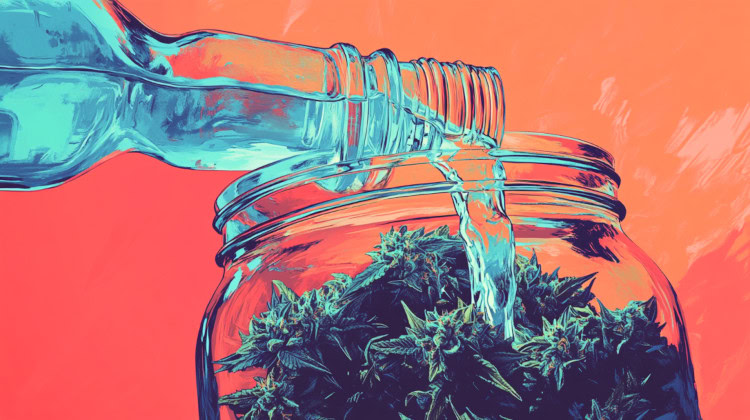
Once the cannabis is decarbed, it’s time to make the tincture. Choose the method based on your preferred base.
Alcohol-Based Tincture (Green Dragon Method)
- Combine Ingredients: Place the decarbed cannabis in a glass jar. Then, pour enough alcohol to cover the cannabis fully.
- Infuse: Seal the jar and store it in a cool, dark place for 2-4 weeks. Shake the jar daily to help the infusion progress.
- Strain It Out: Once the tincture has steeped, strain it through cheesecloth to remove all plant material from the liquid. A coffee filter can also work.
- Bottle and Store: Transfer the tincture to a UV-light-protected dropper bottle. Store in a cool, dark place until ready to use.
Oil-Based Tincture
- Combine Ingredients: Combine the decarbed cannabis and oil in a glass jar. Add enough oil so that the cannabis is completely covered.
- Low Heat Infusion: Set the jar in a pot of water on the stove. Keep the water just below boiling. Steep the mixture for approximately 2–4 hours, stirring occasionally.
- Strain It Out: After infusing, strain the liquid through cheesecloth to remove all plant material. A coffee filter can also work.
- Bottle and Store: Transfer the tincture to a UV-light-protected dropper bottle. Store in a cool, dark place until ready to use.
Quick Tincture Recipe: The Freezer Method
The freezer method serves as a faster approach and works exclusively with alcohol-based tinctures.
- Freeze: Place the decarbed cannabis and alcohol in separate jars in the freezer for 24 hours.
- Combine and Shake: Next, combine the frozen cannabis and alcohol into one jar. Shake vigorously, then place the jar in the freezer.
- Shake and Repeat: To speed up extraction, continue shaking the jar every five minutes for 20 minutes.
- Strain It Out: After infusing, strain the liquid through cheesecloth to remove all plant material. A coffee filter can also work.
- Bottle and Store: Transfer the tincture to a UV-light-protected dropper bottle. Store in a cool, dark place until ready to use.
Storage and Shelf Life
Proper storage significantly affects a tincture’s shelf life and potency. Key points to keep in mind include:
- Keep It Cool and Dark: Heat and light degrade potency, converting THC into the cannabinoid CBN over time. Store tinctures in a UV-protected bottle to avoid quick degradation and keep in a cool, dark space when not in use. A pantry or refrigerator are ideal options.
- Minimize Air Exposure: Exposure to air reduces potency and degrades THC. Open only when ready to use.
- Shelf Life: When stored properly, alcohol-based tinctures can remain effective for over a year. Oil-based tinctures typically last a shorter period, often between six and 12 months.
Frequently Asked Questions (FAQ)
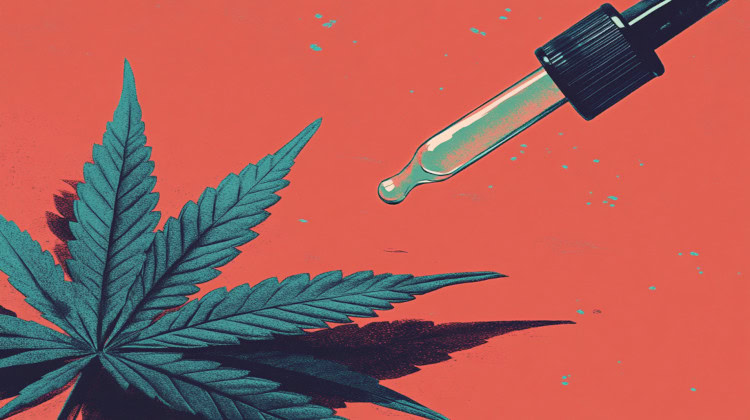
How can I make a quick THC tincture?
The freezer method is best for making a tincture in just a day or two. To make a tincture in the freezer, place the decarbed cannabis and alcohol in two jars and freeze for 24 hours. Then, combine, shake, and strain for a short period.
What’s the best oil for making THC tinctures?
That answer varies by consumer and the tincture’s intended use. MCT and coconut oil are popular choices for their mild flavor and binding abilities, making them effective carriers for THC. However, producers should consider all options before starting the process.
What’s the ideal THC-to-tincture ratio?
It all depends on the amount of tincture made and its intended potency. A balanced tincture often calls for 3.5 grams of cannabis per 3 fl oz of alcohol or oil. However, these numbers will change based on individual goals and preferences.
What are the primary ingredients in THC tincture?
The basics of all THC tinctures include decarboxylated cannabis and a solvent, either high-proof alcohol or a carrier oil like MCT or coconut oil.
The information in this article and any included images or charts are for educational purposes only. This information is neither a substitute for, nor does it replace, professional legal advice or medical advice, diagnosis, or treatment. If you have any concerns or questions about laws, regulations, or your health, you should always consult with an attorney, physician or other licensed professional.

